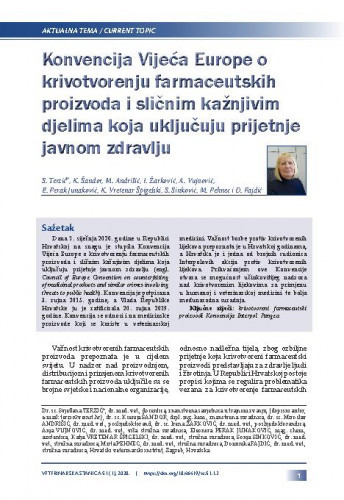Cilj istraživanja je bio ustvrditi standardne vrijednosti za frekvenciju srčnog rada i učestalost srčanog aritmija u hrvatskog posavca i lipicanca. U istraživanje su bila uključena 82 zdrava konja, različitog spola i dobi, 32 lipicanca i 50 posavaca. Svim je konjima u baznovršnom odvodu snimljen EKG u trajanju od 5 minuta. Iz snimljenog elektrokardiograma je određena srčana frekvencija, ritam i tip eventualne aritmije. Ustvrđena srednja vrijednost frekvencije (±SD) za sve konje uključene u istraživanje je 52,9 (±12,7) otkucaja u minuti, što je znatno više od bilo koje od objavljenih vrijednosti za konje do sada. Ustvrđena je učestalost aritmija od 2,4 %. Visoka frekvencija i niska učestalost srčanih artimija mogu biti pasminska karakteristika, ali mišljenja smo da su ove vrijednosti posljedica neprikladnosti primjene ambulantne elektrokardiografije u konja. Smatramo da je za istraživanje elektrokardiografskih karakteristika konja uvijek potrebno životinjama snimiti 24 satni Holter EKG u uobičajenim uvjetima držanja.; ECG is old but still irreplaceable diagnostic tool in cardiology. It has been used for almost a century and despite of its age still there are no alternative diagnostic tools in sight. It is standardised and routinely used in equine medicine, but lately a question of breed specific references has appeared and new research has been done in order to explore the need for breed specific reference values. No research, up to our knowledge, has been done on Croatian posavac and Lipizan horse ECG. The aim of this study was to determine standard reference values for heart rate and the prevalence of arrhythmias in Lipizzaner and Croatian posavac horse. The study included 82 healthy horses of different age and sex, 32 Lipizzaner and 50 Croatian posavac horses. Electrocardiograms were recorded for duration of 5 minutes in base-apex lead. The heart rate, rhythm and arrhythmia were determined from the recorded ECGs. The mean heart rate (±SD) of all the horses included in this study was 52.9 (±12.7) beats per minute, which is significantly higher than any published for the horses till now. The incidence of arrhythmias was 2.4%. High heart rate and low incidence of heart arrhythmias can be a breed characteristic, but we believe that they are in fact a consequence of ambulatory ECG recording that may not be the best choice for ECG analysis in horses. As reported heart rates in our study were high, much higher than any reported for horses at rest, that is why we believe that proper ECG for analysis in horses should be taken in familiar peaceful environment. We believe that further research into equine ECG it is warranted, this time a 24 hour Holter ECG should be recorded.
Sažetak

 Veterinarska stanica : 51,1(2020) / glavni i odgovorni urednik Marko Samardžija.
Veterinarska stanica : 51,1(2020) / glavni i odgovorni urednik Marko Samardžija.